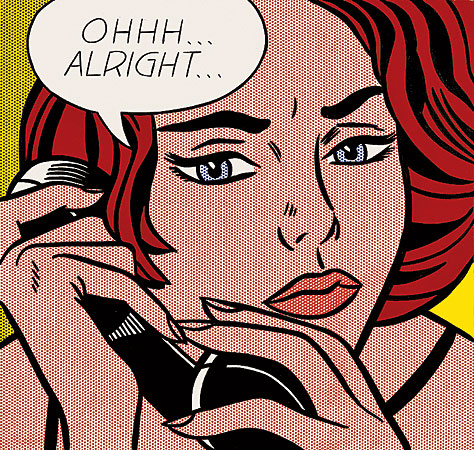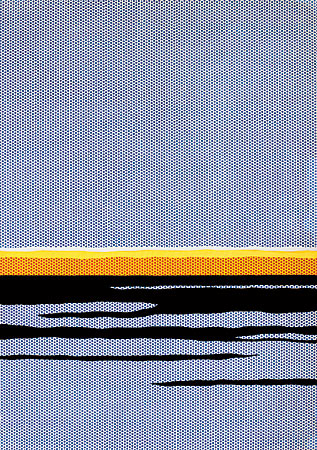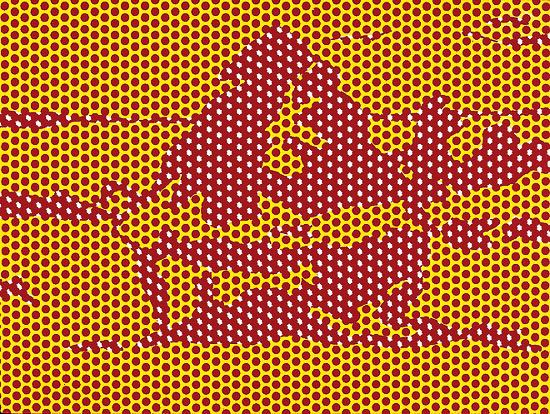
Roy Lichtenstein’s bold comic-book-style paintings are synonymous with the 1950s and ’60s movement known as pop art. But Lichtenstein, a contemporary of Andy Warhol and Jasper Johns, was as steeped in art history as he was in pop culture—a fact the Art Institute hopes to underscore in its wide-ranging new retrospective, the first since the artist’s death in 1997. With more than 160 works on display, there’s a lot to take in. So we asked the exhibition’s curator, James Rondeau (right), to choose three paintings every visitor should see.

Ohhh . . . Alright . . . (1964)
Start your tour with the image Rondeau calls “the Lichtenstein everyone knows: a comic-book panel writ large.” Now a touchstone of pop culture, this piece is a good reminder of just how groundbreaking Lichtenstein’s early output was: “Each of his comic-book images came from meticulous work: finding the image, redrawing it, enlarging and transposing it to canvas, and then hand-painting every individual dot, line, and expanse of color.”

Seascape (1965)
Lichtenstein’s lesser-known abstract paintings, such as this ocean view, married pop experimentation with a more traditional approach to landscapes. “Lichtenstein’s only film was similarly a seascape,” Rondeau says; see it on a continuous loop as part of the exhibition.

Haystack (1969)
This homage to Claude Monet points to one of Lichtenstein’s many influences. “His sources ranged from Picasso to classical antiquity and from art deco to Monet,” Rondeau says. Bonus: The Art Institute has several of Monet’s haystack paintings in its permanent collection, which means you can check out Lichtenstein’s source material firsthand.
GO Roy Lichtenstein: A Retrospective runs May 22 to September 3 at the Art Institute; for info, artic.edu/aic.
Photography: (Rondeau) Courtesy of The Art Institute; (left to right) Ohhh. . . Alright. . . , 1964, © Estate of Roy Lichtenstein/Private Collection; Seascape, 1965, © Estate of Roy Lichtenstein/Private Collection; Haystack, 1969, © Estate of Roy Lichtenstein/the Ruben family


